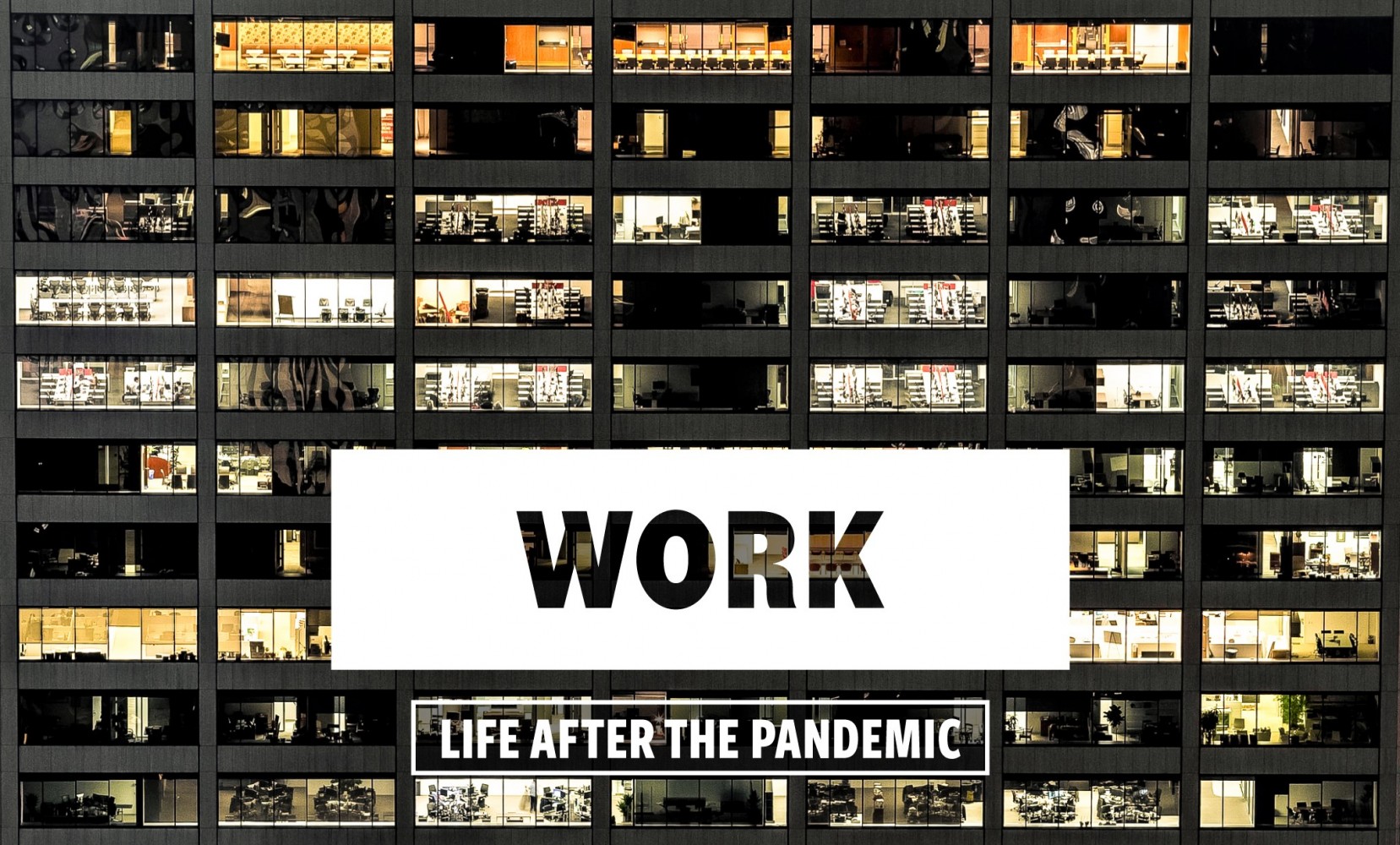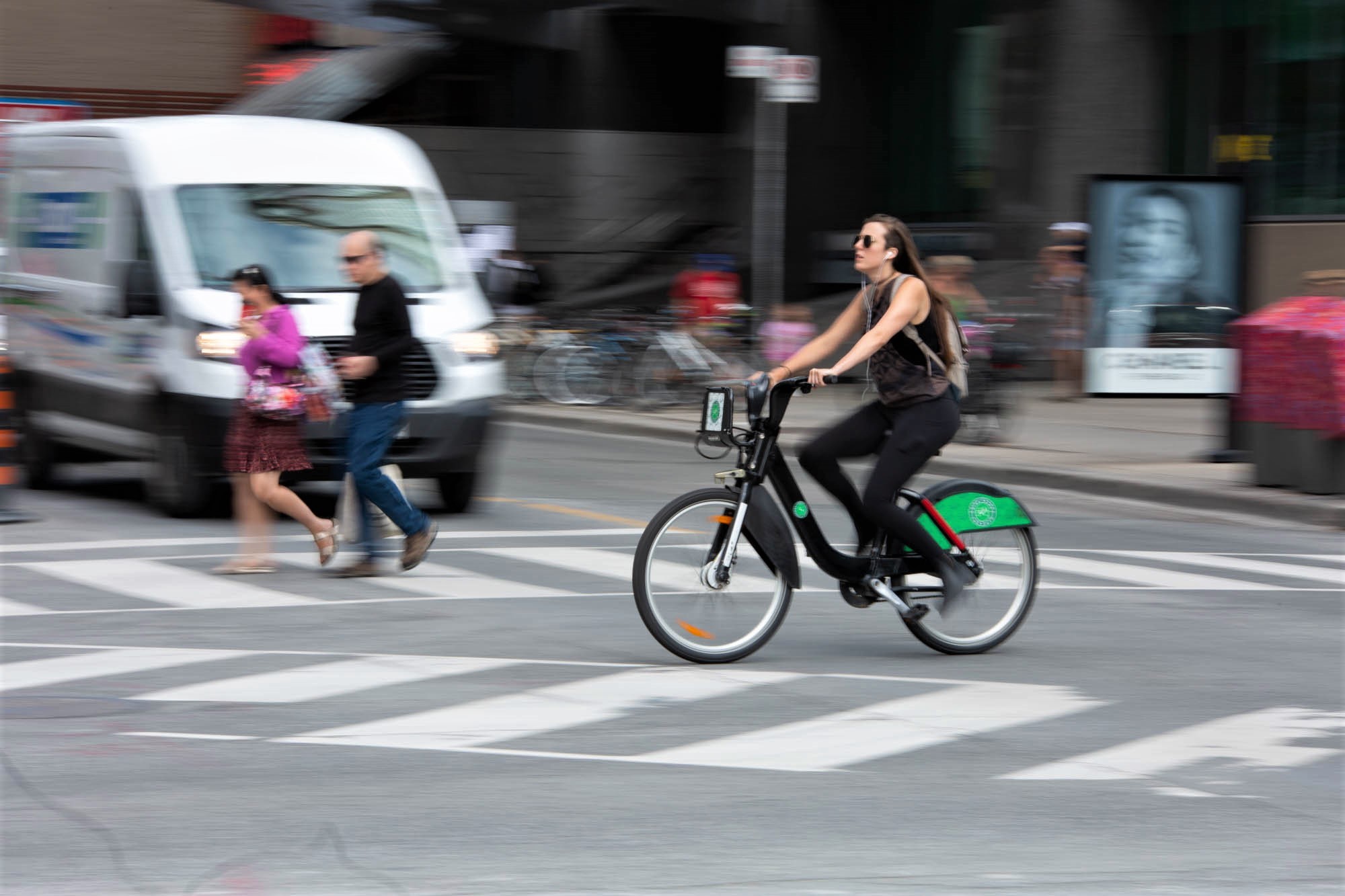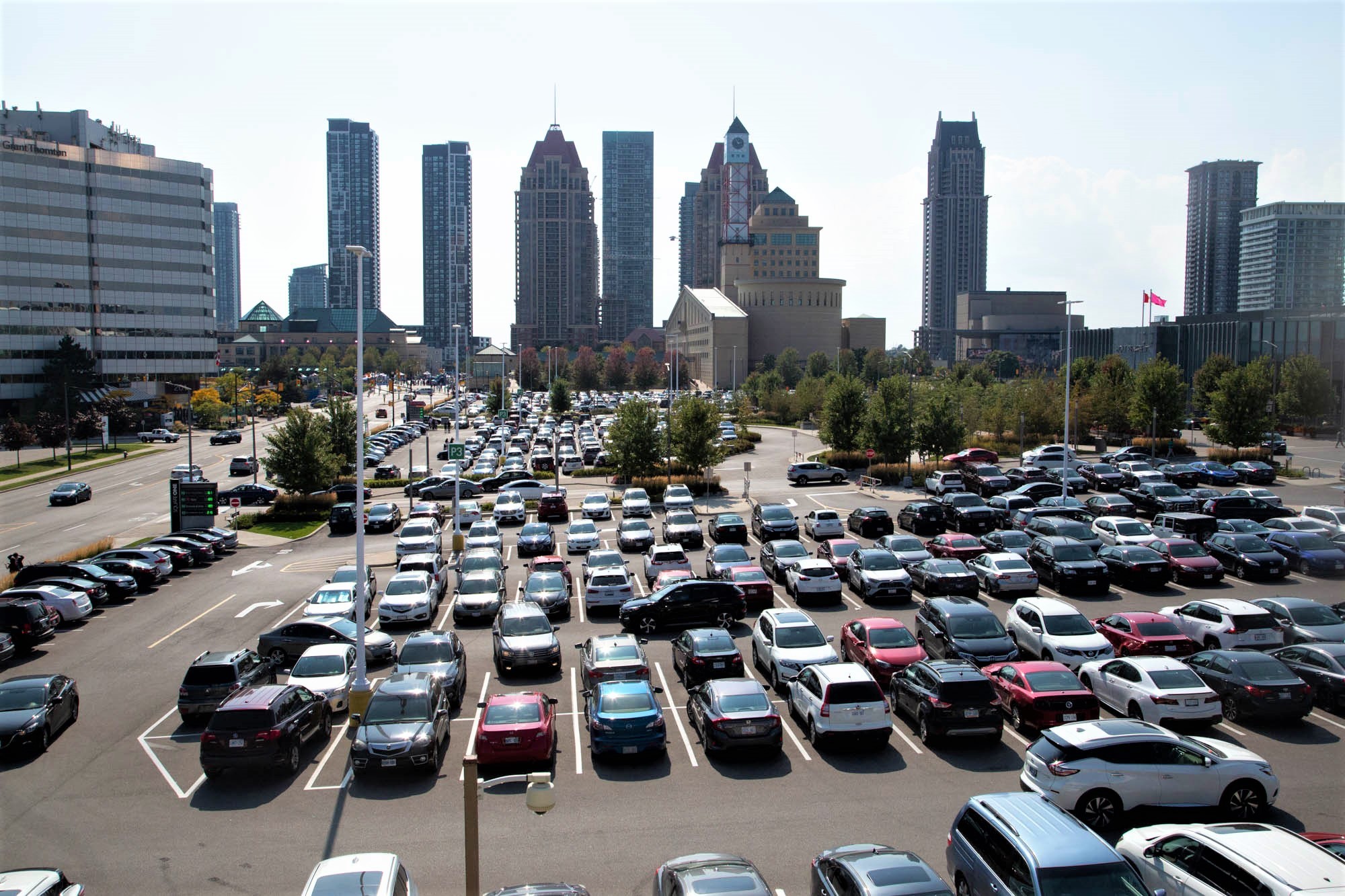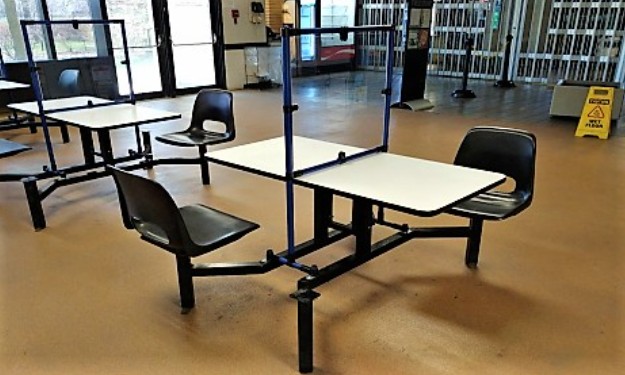
The new ‘work life’ might create more happiness and productivity
In 1997, American sociologist Arlie Russell Hochschild wrote a book that had an underlying message many employees working from home may relate to in the age of COVID-19.
The Time Bind profiled a working mother whose home life did not fit the stereotypical image of a serene haven many imagined retreating to after work.
“Linda felt she could only get relief from the ‘work’ of being at home by going to the ‘home’ of work,” Hochschild wrote. The notions of home and work had switched, with all the unexpected demands she faced at the end of the day after that front door closed behind her and the true labour began.

Going to work is an escape and reward for many
It seems counter-intuitive, that so many might actually miss work or working in the office rather than from home, but if accommodations currently in place continue, we could see more and more off-balance employees.
The U.S.-based Society for Human Resource Management reported that online real estate portal Zillow informed staff two months ago that telework can continue until at least the end of the year. "My personal opinions about [working from home] have been turned upside down over the past two months," Zillow co-founder and ZillowGroup CEO Rich Barton said in a tweet. "I expect this will have a lasting influence on the future of work,” he said.
The industry organization conducted a national survey which found that almost half of all employers are putting together plans for more permanent work from home strategies, and many of those that are not, simply can’t because of the nature of their business.
According to international consulting firm McKinsey, its research shows that 80 percent of employees surveyed reported that they like working from home. And more than forty percent believe they are more productive, while almost 30 percent report being just as productive. Its research cited the freedom from long commutes as a major factor for the satisfaction and productivity many work-from-home employees report.
Meanwhile, for big companies, McKinsey says, “Many organizations think they can access new pools of talent with fewer locational constraints, adopt innovative processes to boost productivity, create an even stronger culture, and significantly reduce real-estate costs.”

Packed parking lots and highrises that frame Mississauga's downtown business area, could look very different
But a question that will likely only be answered if tele-commuting becomes the norm is, do workers actually want to be confined inside their own homes in a more permanent way?
As Hochschild wrote almost a quarter-century ago, for many women, who had only begun to experience the full liberating influence of proper participation in the labour market a few decades earlier, do they really want to return to the days of being isolated inside their own walls, tethered to their computers?
While it might be different, in terms of the actual type of work being done at home, the effect could be similar. And it would impact men in many of the same ways.
But even for those wishing to return to the pre-pandemic work experience, it remains unclear if that’s going to be possible.
Social settings inside giant office towers, many of which have been created in the past two decades, with shared working hubs and floating, or hoteling, spaces used by different employees for different tasks, along with open concept spaces that engendered the type of collegial atmosphere so many miss, could all become a distant memory.
If the novel coronavirus or the next one to hit become a lasting feature of our society, just like the various flu viruses, it’s likely the traditional corporate work world will have to move back to a more isolated form.
People miss physically going into work, they miss the social interactions, the watercooler talks and some even miss the commute, researchers and business professionals told The Pointer.
But the landscape has changed, possibly forever, and experts believe the fundamental structure of work will not look like it did prior to the pandemic.
The shape of this new “work life” will depend on the industry.
Hugh Arnold, a professor at the University of Toronto and business consultant, said physical distancing has made it impossible for some businesses, such as restaurants and gyms, to deliver their services.
But places like financial institutions and insurance companies have shown they can function effectively, meet the needs of customers, and be profitable even though face-to-face interactions are not taking place. “The experience that we’ve had over the last three months says that we are not as dependent upon live face-to-face interaction between people to achieve the degree of coordination that's required for even very large organizations to function effectively,” Arnold said.
This reality largely trumps the fear many managers have: if employees aren’t physically present in an office to work, they actually can be just as productive at home. Without all the distractions and in many cases, without the more immediate stresses inside office spaces, some might actually be more productive at home.

Soul destroying commutes across Brampton and Mississauga are a feature of work life that those staying at home miss the least
But would it make them more happy?
Other considerations are also being grappled with: are multiple office locations needed if people can work productively and collaboratively from home? Should some employees be shifted permanently to remote work? Will floating or rotating in-office schedules be a likely hybrid approach?
These are questions some companies have already addressed. Last month, Twitter announced it will allow those employees who don’t need to be physically present the opportunity to work from home even after the pandemic subsides.
Hugh Gunz believes hybrid-models are a likely solution, but only time will tell. “Every time something cataclysmic happens, everybody always says the world will never be the same again. Sometimes they're right. Sometimes they're not,” Gunz, a professor of organizational behaviour at the University of Toronto, said.
There are many benefits to going with the “hybrid-model” of flexible work.
One benefit Arnold sees is coordination. Interacting face-to-face is the best and easiest way to coordinate situations, he said. For example, if an urgent problem needs to be dealt with, it’s easiest to call everyone into the conference room to solve a problem together. While this isn’t impossible with current tele-conferencing tools and better video-based conferencing platforms now competing for the lucrative work-from-home market, it could bring challenges. Only experimentation will provide the answers, Arnold said. Some companies, because of the nature of their core functions, will have to maintain some physical work environments, while others will likely be able to do without their past structures.
One reality that is certainly more predictable is the need to work under much stricter safety measures. According to Statistics Canada, only four in ten Canadians are currently able to work from home, Scott Schieman, chair of University of Toronto’s sociology department, pointed out. For others, until a vaccine is created, health and safety measures will have to be implemented by employers who don’t have the option of working from home, Schieman told The Pointer.
This will mean less people in the physical work space at the same time, more distance between them, fewer meetings or other gatherings of large groups, personal protective equipment in the work space and strict routines for hand washing and the disinfection of the entire work environment.
For the four in ten Canadians who can work from home, the new normal of many jobs may involve a hybrid-model encompassing elements of remote work and working in physical locations, as was becoming more common well before the onset of the pandemic.
This hybrid-model, or “flexible work” arrangement, allows alternate schedules for employees and much more freedom for those who can meet deadlines and other requirements just as easily from home, without rigid office-based demands.
One possible benefit of these arrangements is illustrated through anecdotal examples being shared across social media. The endless meetings many employees had to suffer through in the office, often with little purpose or actual productive function, are being jettisoned in the virtual office space, or have been greatly reduced in some cases, according to those reporting their liberation from these chronic features of the corporate world.
While flexible work is a concept that has been around for decades, the Ontario government is leaving the operational choices up to employers. “The government currently has no plans to mandate flex work. We have been clear that as we recover from COVID-19, we encourage workers and employers to work together to find solutions that work best for them,” a spokesperson from The Ministry of Labour, Training and Skills Development told The Pointer.
John Trougakos, an organizational behaviour professor at the University of Toronto, believes hybrid-models will give people more of a work-life balance. He said allowing people to work from the office some days and remotely on others could create efficiency, as most employees naturally find the best way to achieve maximum productivity. “We know when people have a choice and it’s their own preference to do something that's more enjoyable for them, that is more rewarding for them and more motivating.”
A flexible work schedule may also help alleviate the negative aspects of working remotely.
Gunz said organizational culture (how people behave in groups) is the heart of what makes workplaces click. “If you’re not there to see people and hear people tell stories and watch them in action the way that you would be if you're in a face-to-face organization, it would be much harder…these are the things that comprise organizational cultures to work.”
With the current at-home work structure “Zoom fatigue,” a term for the increased use of video conferencing tools for communication during the pandemic, has become an issue. Zoom or other video-platform meetings can be exhausting, Gunz said. “It's because you're sitting there looking at a row of faces and you're trying to figure out what you are supposed to do, how are you supposed to react. There are very few clues.”
It’s a reality echoed by Trougakos. He doesn't believe it’s a natural mode of communication. “We’re taking more self-regulation to do those, I think, than you probably would if you were just in face-to-face communications with people.”
The human contact can also be very helpful, as Schieman said co-workers can be a strong buffer against loneliness for many people, even if it’s just a drink at the water cooler or going out for an occasional lunch. “I think after months of social isolation for a lot of people, even if you're not isolated because you have family, I think some people are really just craving that social and human contact,” he said.

Characters in the U.S. version of The Office clearly got as much from their comical social interactions as they did from work (if any was actually done)
The success or failure of new approaches will depend on the leaders within each organization, Arnold said. Part of his work involves assisting senior executives and organizations with leadership issues. The best leaders in this situation won’t feel the need to micromanage and will likely utilize their own instincts for flexibility, as the new normal creates a daunting fear of change. “Effective leaders are not bureaucrats saying ‘follow this process’ or ‘do these specific things’,” he said.
Trougakos has also spoken with companies about issues relating to employee resilience, coping mechanisms and the importance of open communication as people start to return back to work. “Giving employees some sense of feeling they have some control over their life and how they do things, and really looking for ways to support people because, of course, everybody deals with different challenges.”
Trougakos believes the key to success in this new working world will be flexibility and listening to the ways different employees are experiencing the new normal. “When people have autonomy, and they can make a choice, they're more satisfied with their job,” Trougakos said.
There are costs such as stress and burnout associated with not being able to make such choices. When this is the case, employees take more sick days and often leave, which hurts productivity and the bottom line.
Many now returning to their jobs are part of the retail sector, which has recently been allowed to reopen in phases and only with social distancing restrictions in place.
Over the past couple weeks, retail stores with street entrances were allowed to open. Friday, June 12, also marked the opening of malls, hairdressers and nail salons for some municipalities in the province. Changes to work spaces will largely be under protocols put out by the provincial government, which has outlined over 100 specific guidelines tailored to different sectors.
Some stores, like retail giant H&M are staggering employees’ work breaks as a safety measure. Similar efforts outlined by the province will also take place at Bramalea City Center in Brampton when it opens up. “There is signage to address physical distancing measures and other health and safety protocols while also creating a positive experience for our shoppers, employees and tenants,” a spokesperson for the mall told The Pointer. It did not open Friday, as the Region of Peel did not meet the requirement to move to the second stage of reopening. Provincial guidelines for moving to the next phase require a decline in new cases must be seen for at least two weeks.
Even if people work jobs that can’t be done remotely, the spread of the novel coronavirus can be used as a way to restructure work shifts in a healthier way, Trougakos points out. “This pandemic is also bringing the idea of workers’ health to the forefront.” Employees may often face long and taxing shifts, and the pandemic provides an opportunity to address these issue and other workplace safety concerns.

Socializing at work even at factories will be more difficult. Above, a common area at Brampton's Chrysler plant has been refitted to ensure distancing and safety.
The Public Service Alliance of Canada, one of Canada’s largest unions, stresses that employees have the right to refuse any work that might put them at risk. It is the responsibility of the employer to provide a “healthy and safe environment.” However, fear of contracting the virus is not enough for an employee to refuse work. If safe workplaces have been created, to standards set by the provincial government, people are expected to show up.
Regardless of work that is essential and must be performed in a specified physical place, or jobs that will likely involve more flexible work arrangements, one consistent point made by most of the experts is that, like so much in life, we will only know what the new normal will look like after all the stops and restarts that are sure to continue long after this pandemic retreats.
The main takeaway from Arlie Russell Hochschild's book, The Time Bind, is that work is not only essential in our lives, it often offers escape and reward that we simply can’t get from anywhere else.
For those who believe in human ingenuity, this virus just might make work, in whatever form it takes, even more rewarding for many.
Email: [email protected]
Twitter: @nida_zafar
Tel: 416 890-7643
COVID-19 is impacting all Canadians. At a time when vital public information is needed by everyone, The Pointer has taken down our paywall on all stories relating to the pandemic to ensure every resident of Brampton and Mississauga has access to the facts. For those who are able, we encourage you to consider a subscription. This will help us report on important public interest issues the community needs to know about now more than ever. You can register for a 30-day free trial HERE. Thereafter, The Pointer will charge $10 a month and you can cancel any time right on the website. Thank you.
Submit a correction about this story


